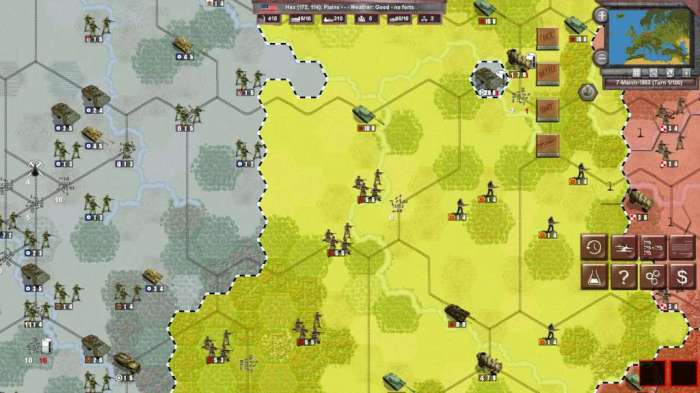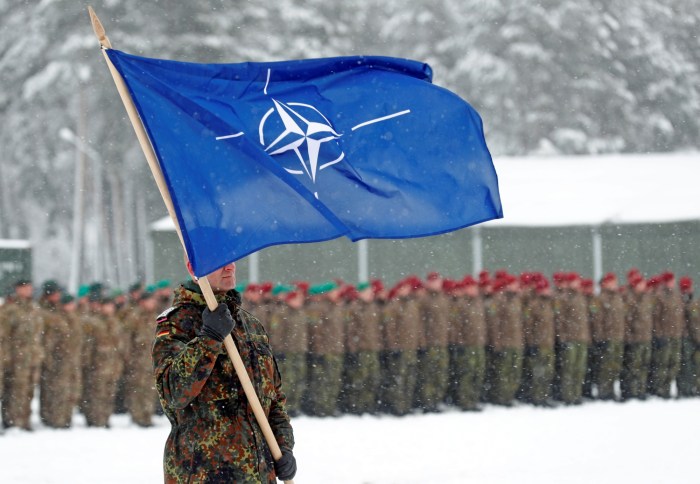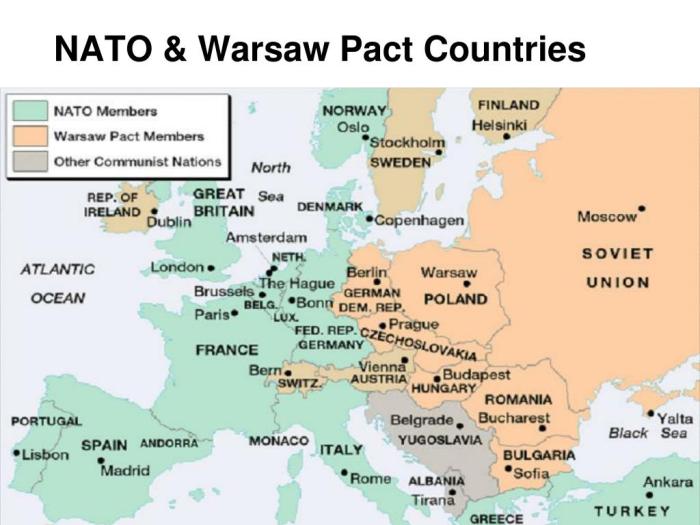Unveiling the NATO and the Warsaw Pact Webquest Answer Key, this comprehensive guide delves into the intricacies of these two formidable alliances that shaped the dynamics of the Cold War. From their origins and objectives to their military capabilities and post-Cold War evolution, this exploration unravels the complexities of these alliances.
NATO, established in 1949, and the Warsaw Pact, formed in 1955, emerged as opposing forces during the Cold War, each with distinct goals and strategies. Their membership, military doctrines, and roles in shaping global politics will be meticulously examined, shedding light on the delicate balance of power that characterized this era.
Origins and Establishment of NATO and the Warsaw Pact

The formation of NATO and the Warsaw Pact was a direct consequence of the post-World War II political and ideological divide between the United States and the Soviet Union. Both alliances were established to provide collective security and deter potential aggression from the opposing bloc.
Key Events Leading to the Establishment of NATO
- 1947: Truman Doctrine and Marshall Plan announced, providing economic aid to Western Europe.
- 1948: Soviet Union blockades Berlin, leading to the Berlin Airlift.
- 1949: North Atlantic Treaty Organization (NATO) established.
Key Events Leading to the Establishment of the Warsaw Pact, Nato and the warsaw pact webquest answer key
- 1949: Council for Mutual Economic Assistance (COMECON) established.
- 1955: Warsaw Pact established.
Objectives and Structures of NATO and the Warsaw Pact: Nato And The Warsaw Pact Webquest Answer Key
NATO’s Objectives and Structure
NATO’s primary objective was to provide collective defense against potential Soviet aggression. Its structure consisted of a council of representatives from member states, a military command structure, and a secretariat.
Warsaw Pact’s Objectives and Structure
The Warsaw Pact’s objective was to strengthen the Soviet Union’s military position in Eastern Europe. Its structure was similar to NATO’s, with a council, military command, and secretariat.
Membership and Expansion of NATO and the Warsaw Pact

Original Member States of NATO
- Belgium
- Canada
- Denmark
- France
- Iceland
- Italy
- Luxembourg
- Netherlands
- Norway
- Portugal
- United Kingdom
- United States
Original Member States of the Warsaw Pact
- Albania
- Bulgaria
- Czechoslovakia
- East Germany
- Hungary
- Poland
- Romania
- Soviet Union
Expansion of NATO and the Warsaw Pact
Over time, both NATO and the Warsaw Pact expanded their membership. NATO expanded to include Greece, Turkey, Spain, and West Germany, while the Warsaw Pact included East Germany, Albania, and Romania.
Military Capabilities and Strategies of NATO and the Warsaw Pact

NATO’s Military Capabilities and Strategies
NATO’s military capabilities included conventional and nuclear forces. Its strategy was based on the concept of flexible response, which allowed for a range of options in the event of Soviet aggression.
Warsaw Pact’s Military Capabilities and Strategies
The Warsaw Pact’s military capabilities also included conventional and nuclear forces. Its strategy was based on the concept of mass mobilization and offensive operations.
FAQ Compilation
What were the primary objectives of NATO?
NATO’s primary objectives were to deter Soviet aggression, maintain collective security among its members, and promote stability in the Euro-Atlantic region.
How did the Warsaw Pact compare to NATO in terms of military capabilities?
The Warsaw Pact possessed a larger conventional force than NATO, particularly in terms of ground troops and armored vehicles, while NATO held superiority in naval and air power, as well as nuclear weapons.
What factors contributed to the dissolution of the Warsaw Pact?
Internal political and economic problems within the Soviet Union, combined with the growing desire for autonomy among Eastern European states, led to the collapse of the Warsaw Pact.